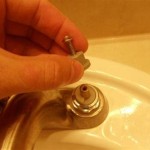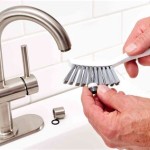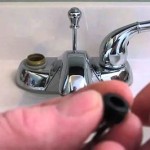Bathroom Sink Stopper Screen Replacement
A bathroom sink stopper screen, often overlooked, plays a crucial role in preventing debris from clogging the drain. Over time, these screens can become damaged, clogged, or simply wear out, necessitating replacement. This process is typically straightforward and can be accomplished with minimal tools and effort. This article provides a comprehensive guide to replacing a bathroom sink stopper screen.
Before beginning the replacement process, it's essential to identify the type of stopper installed in the sink. Common types include push-down, lift-and-turn, and pop-up stoppers. Each operates differently and may require slightly different removal and replacement procedures for the screen.
Push-Down Stopper: These stoppers are operated by simply pushing down on the top of the stopper to close the drain and pushing again to open it. They are generally the easiest type to work with regarding screen replacement.
Lift-and-Turn Stopper: This type of stopper requires twisting the stopper cap to lift and close the drain. They often have a more intricate design, potentially requiring a bit more care during screen removal and replacement.
Pop-Up Stopper: Operated by a lever located behind the faucet, pop-up stoppers utilize a pivot rod and clevis strap mechanism. Replacing a pop-up stopper screen might involve adjusting this mechanism, adding a layer of complexity.
Once the stopper type has been identified, the necessary tools can be gathered. Commonly required tools include pliers, a small flathead screwdriver, and possibly a wrench. Having these readily available will streamline the replacement process.
The next step is removing the existing stopper. For push-down stoppers, this typically involves unscrewing the top cap. Lift-and-turn stoppers may require a similar unscrewing action or a gentle rocking motion to remove the stopper body. Pop-up stoppers require accessing the clevis strap underneath the sink, often necessitating disconnecting the pivot rod.
With the stopper removed, the old screen can be detached. Screens are commonly attached through a press-fit mechanism or small screws. Pliers or a flathead screwdriver can assist in carefully removing the old, damaged screen.
Before installing the new screen, it’s recommended to thoroughly clean the stopper and surrounding area. This will remove any accumulated debris and ensure a proper fit for the new screen. A mild cleaning solution and a brush can be helpful for this task.
Installing the new screen is typically the reverse of the removal process. Align the new screen with the stopper and press it firmly into place or secure it with the appropriate screws. Ensure the screen sits flush and securely within the stopper assembly.
After the new screen is securely in place, reassemble the stopper mechanism. Screw the cap back on for push-down stoppers, reinsert and twist the body for lift-and-turn stoppers, or reconnect the pivot rod and clevis strap for pop-up stoppers. Ensure all components are correctly aligned and tightened.
Testing the new installation is crucial. Run water into the sink and check for any leaks around the stopper. Observe the stopper’s operation, ensuring it seals and opens the drain effectively. If leaks are observed, recheck the connections and tighten any loose components.
Choosing the correct replacement screen is paramount for a successful repair. When purchasing a replacement, consider the material and size. Stainless steel screens are generally preferred for their durability and resistance to corrosion. Measure the diameter of the old screen to ensure a proper fit with the existing stopper.
Maintaining the new stopper screen will prolong its lifespan and prevent future clogs. Regularly removing hair and debris caught in the screen can prevent build-up. Avoid pouring harsh chemicals down the drain, as they can damage the screen material. Periodically cleaning the screen with a mild cleaning solution can also contribute to its longevity.
While replacing a bathroom sink stopper screen is often a straightforward DIY project, some situations may warrant professional assistance. If the stopper mechanism is significantly damaged or the drain assembly is particularly complex, consulting a plumber might be the best course of action.
Understanding the different types of stoppers, gathering the necessary tools, and following the appropriate steps will ensure a successful stopper screen replacement. Proper maintenance of the new screen will contribute to its effectiveness and longevity, keeping the bathroom sink drain clear and functional.

Pop Up Bathroom Sink Drain Strainer Stopper Replacement China Made In Com

Parts Of A Sink The Home Depot

Sink Drains Stoppers At Com

How To Fix A Bathroom Sink That Won T Drain Bfp Bay Area

How To Unclog A Bathroom Sink The Home Depot

Vigo Vessel Bathroom Sink Pop Up Drain And Mounting Ring

Muff 2 Brass Drain Plug Bathroom Sink Pop Clack For Bath Vanity Replacement Bolts

How To Remove A Bathtub Drain Forbes Home

How To Replace A Sink Stopper Quick And Simple Home Repair Bathroom Drain

Vigo Vessel Bathroom Sink Pop Up Drain And Mounting Ring
Related Posts







